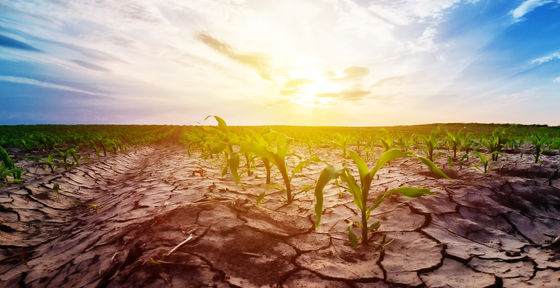Scientists warn that 'flash drought', where water suddenly dries up, is increasing due to climate change

It is well known that climate change intensifies sea level rise and flood damage. It was newly found that the problem of 'flash drought', which suddenly causes an abnormal water shortage, is accelerating, as opposed to flash floods that suddenly overflow with a large amount of water.
Accelerating flash droughts induced by the joint influence of soil moisture depletion and atmospheric aridity | Nature Communications
'Flash Droughts' Coming on Faster, Global Study Shows --UT News
https://news.utexas.edu/2022/04/01/flash-droughts-coming-on-faster-global-study-shows/
'Flash Droughts' Are Striking Faster as The World Warms, Scientists Warn
https://www.sciencealert.com/flash-droughts-are-striking-faster-as-the-world-dries-up-scientists-warn
Numerous meteorological observations have revealed that rapid global warming is progressing, with records of maximum temperatures breaking every year. According to Professor Zong-Liang Yang, a geoscientist at the University of Texas at Austin, global warming is evidence that rapid droughts are more likely to occur. Therefore, the research team of Professor Yang and others conducted research to analyze hydrological meteorological data observed by meteorological satellites between 2000 and 2020, that is, data on water circulation such as precipitation and river water levels around the world.
As a result, it was found that 33.64 to 46.18% of the droughts that occurred during the 21 years analyzed were flash droughts that took only 5 days to reach a drought state. Although the frequency of droughts did not change significantly, it was confirmed that the period until drought was shortened.

According to the research team, general floods progress relatively slowly over 5 to 6 months due to overlapping weather conditions. On the other hand, 70% of flash droughts occur in half a month, and another 30% dry up the area in just five days. The drought is short, but sudden water shortages at critical times for crop growth can have catastrophic consequences.
For example, when a
Regarding the effects of a flash drought, the research team said, 'Since a flash drought occurs rapidly, there are few signs and there is no time to prepare for the drought, the impact on agriculture and society may be greater than that of a slow drought. There is. '

Regional analysis also found that flash droughts are most likely to occur in moist or moist / semi-humid regions such as Southeast Asia, East Asia, the Amazon Basin, eastern North America, and southern South America. In areas where these flash droughts are likely to occur, the frequency of flash droughts was 22 to 59% higher in 21 years.
So far, the mechanism of rapid drought that causes the water in the area to dry up in just five days has not yet been elucidated. 'There is little research into the process of flash drought or the root cause of the rapid outbreak, which is the most important feature of flash drought,' said Yamin Qing and colleagues at the Hong Kong Polytechnic University, the lead author of the paper. He said that in the future, in addition to monitoring global warming, it will be necessary to focus on monitoring and predicting flash drought.
Related Posts:
in Science, Posted by log1l_ks







